THE MAYPOLE
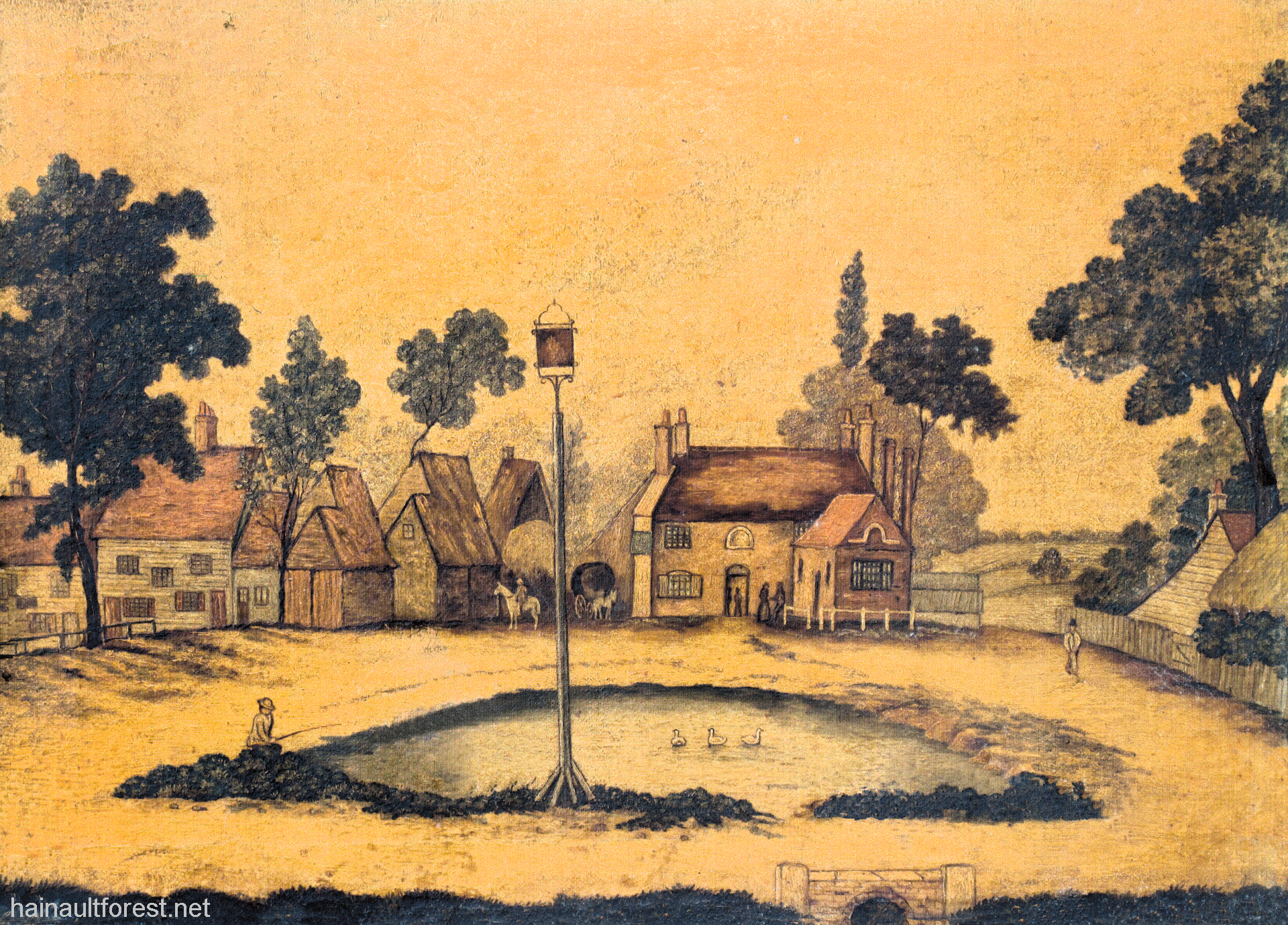
An inn called 'Skynners' dating back to the 15th century stood near a large pond in Chigwell Row. Its name later changed to 'Maypole'. The building was pulled down in the 1970s to make way for housing.
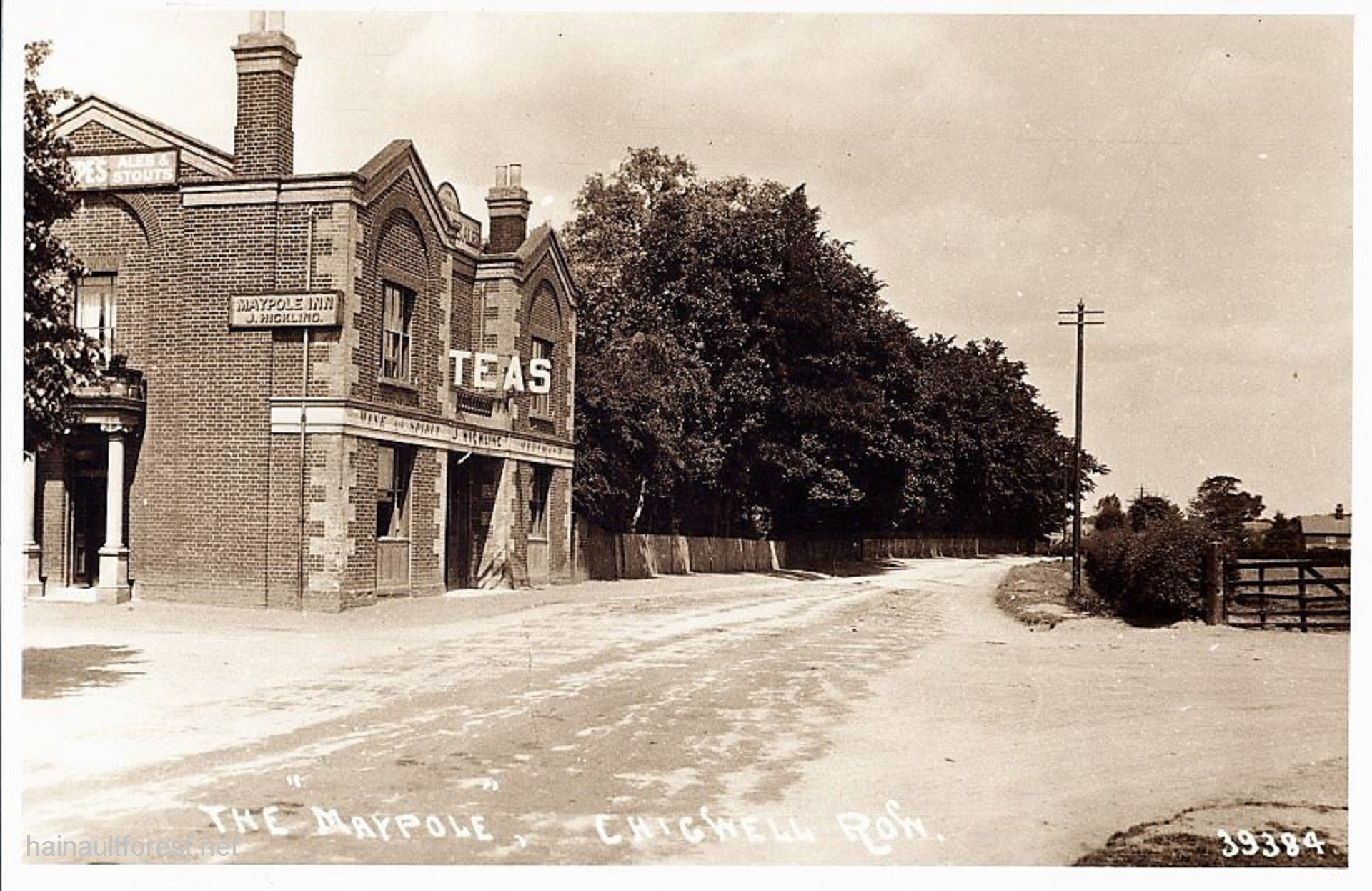
This 'Maypole Inn' was built in front of the site where the earlier 'Maypole' stood. George Buxton and his widow held the licence for nearly 29 years, After Buxton's death, the pub's licence transferred to Mr. J. Hickling (previously of The Chequers, Walthamstow) in 1904. Hickling made a number of internal alterations so it could cater for the changing class of trade due to the opening of Hainault Forest and the new railway line.
Publicans at the Maypole:
(shows year of trade directory listing)
1855 Charles Wedrell
1874 John Stephens
1894 George Buxton
1904 J. Hickling
1911 George Reeves
Wedrell's Plain in Hainault Forest may have a connection to Charles Wedrell, however this needs to be confirmed.
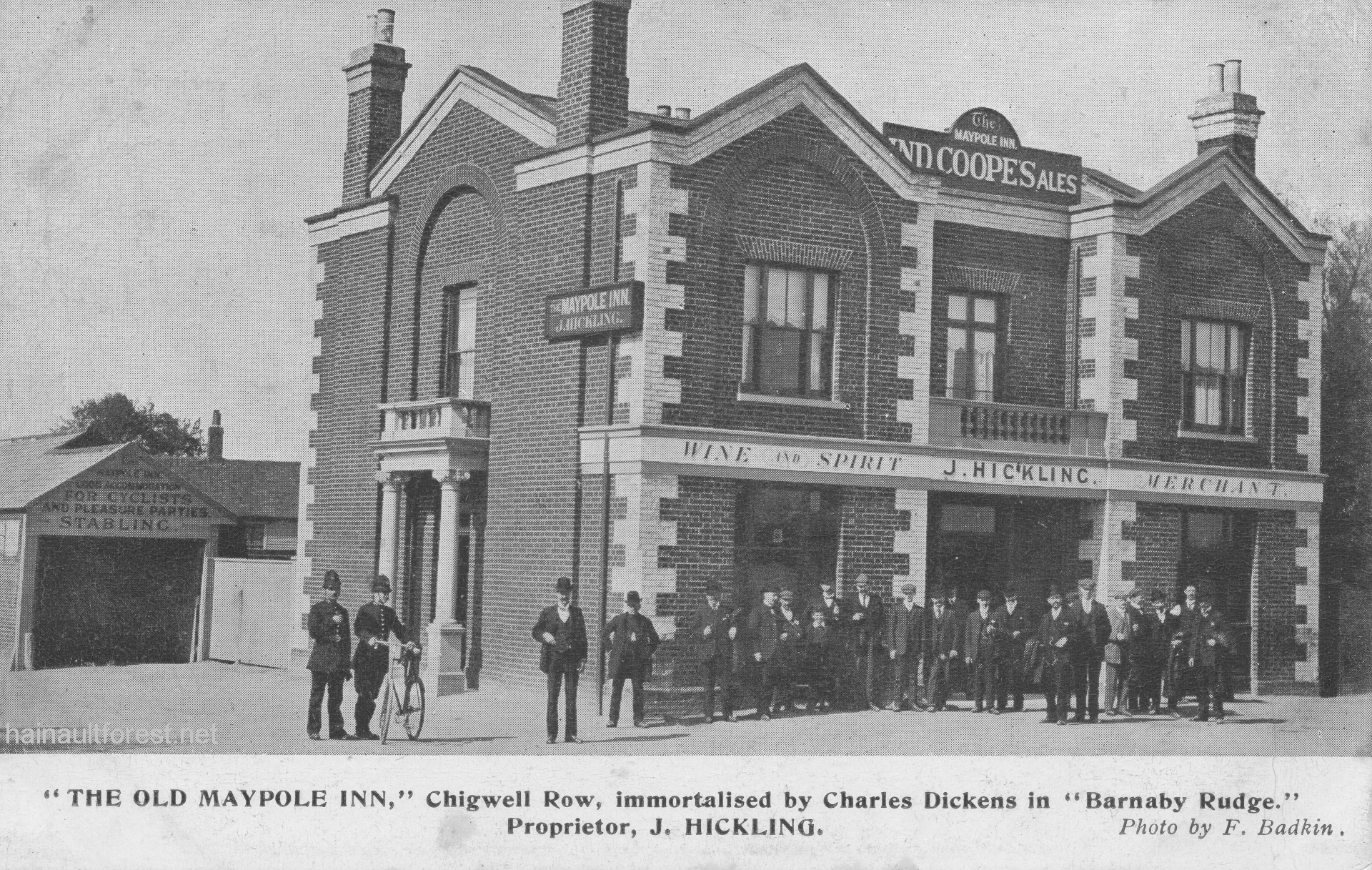
Dickens used the name 'Maypole' in his book Barnaby Rudge, although the inn described in his story is actually based on the King's Head in Chigwell village. Written on the small building (left): "THE MAYPOLE INN FOR GOOD ACCOMMODATION FOR CYCLISTS AND PLEASURE PARTIES. STABLING."
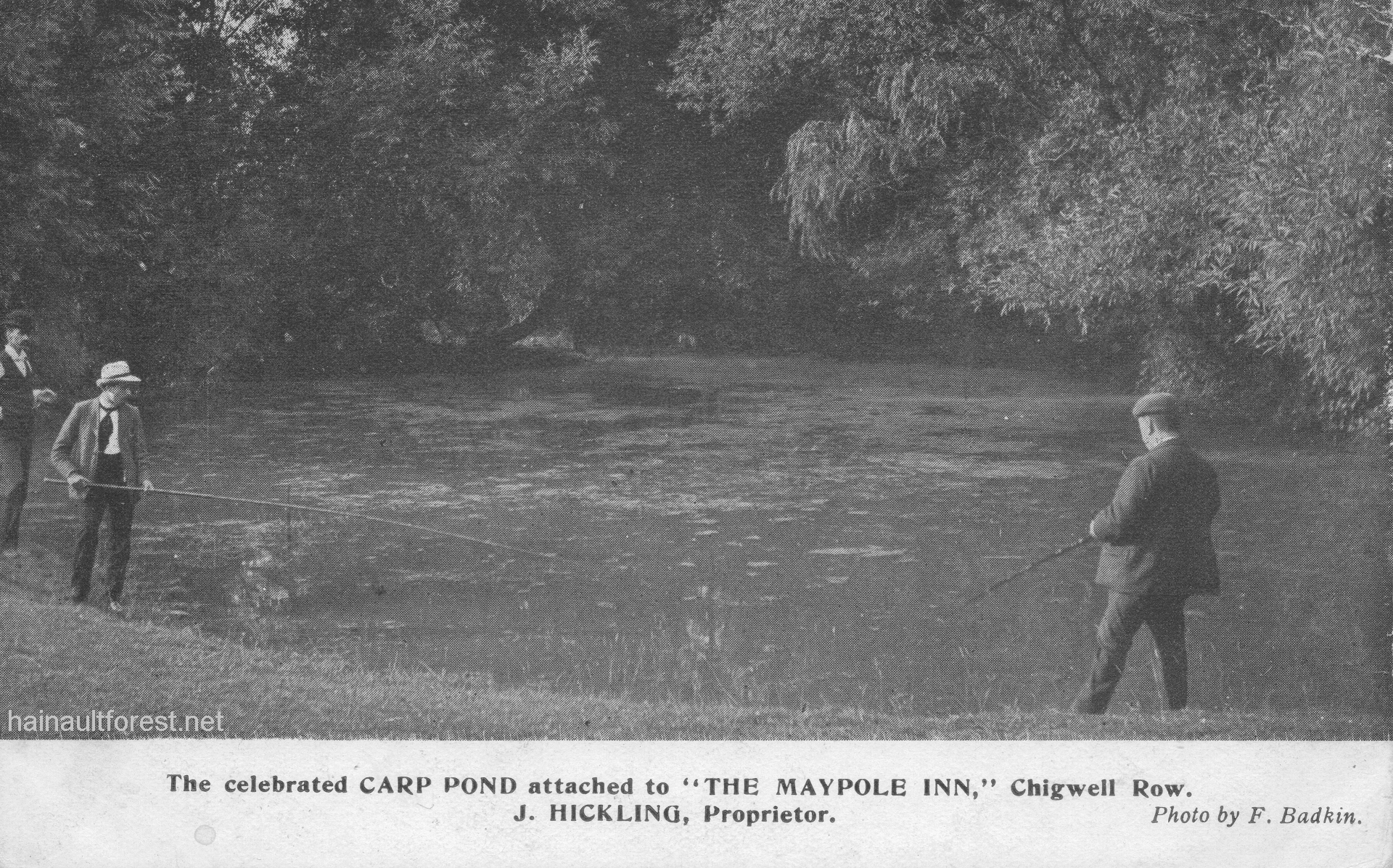
The pond next to the Maypole Inn was renowned for having excellent carp. The pond was later drained and filled in.
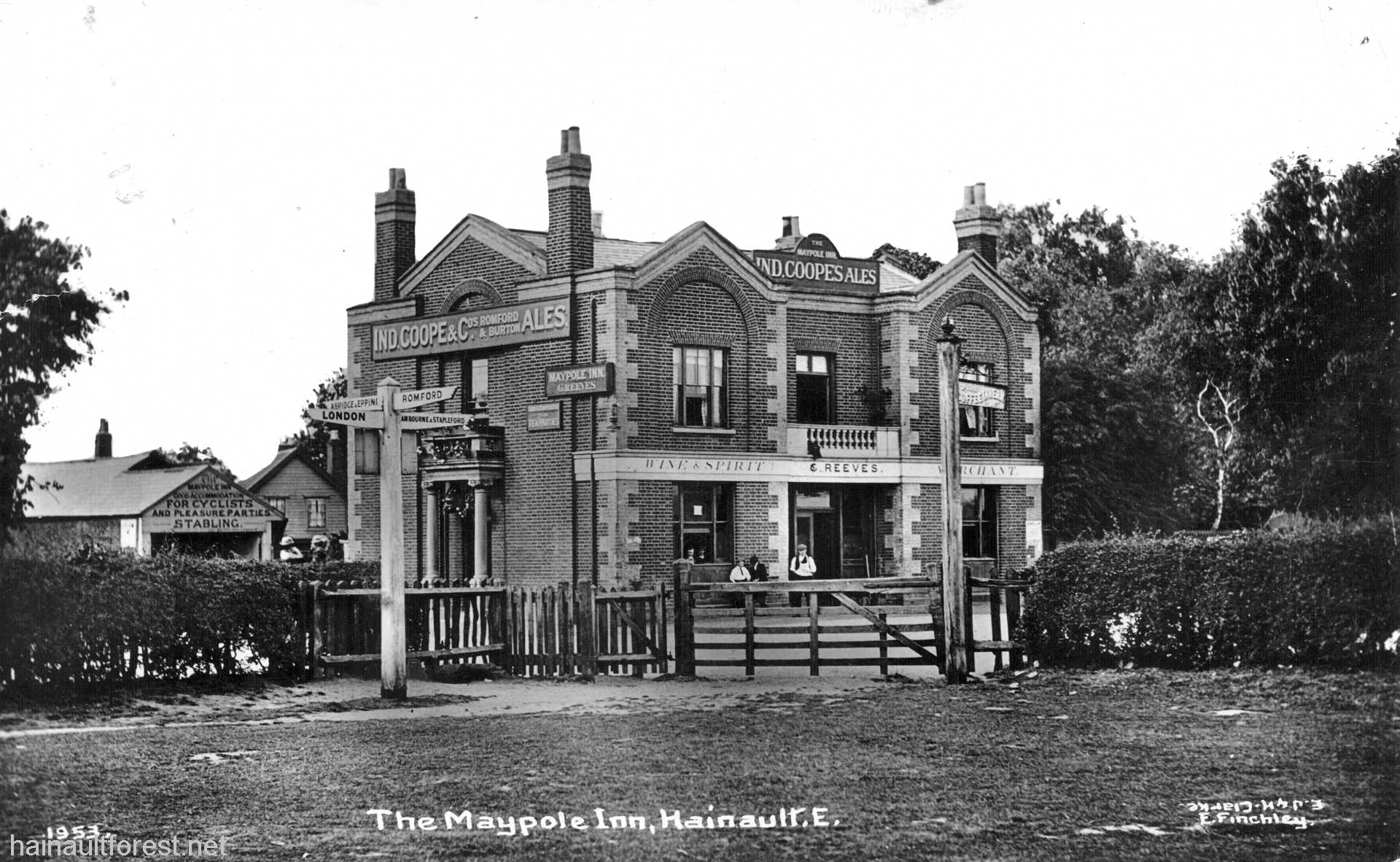
During the reign of Queen Victoria many people relied on horse-drawn coaches for travelling around. Coaches could be caught at the 'Maypole Inn' heading for Ongar, the 'Three Nuns' in Whitechapel, and the 'Bull' at Aldgate. One of the operators running coaches from Chigwell Row, William Powling, lived next to the Maypole. His wife, Sophia, continued the business when he died in 1848, running a daily coach to London and another to newly opened Ilford railway station. William Claydon took control of these coaches in 1858, moving to Vicarage Lane in 1864.
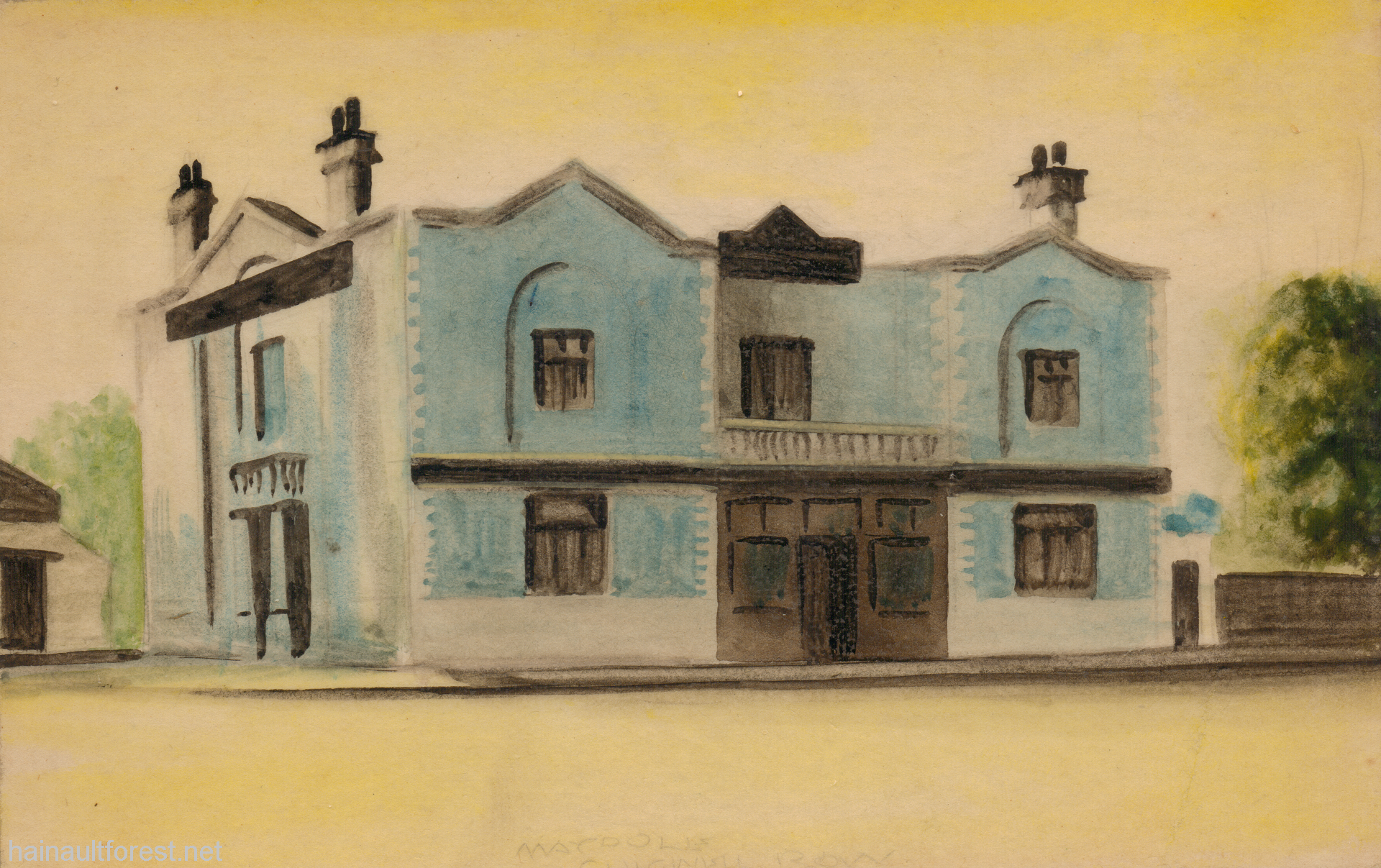
This early postcard of the Maypole Inn dates before 1902 when only addresses were allowed to be written on the reverse side.
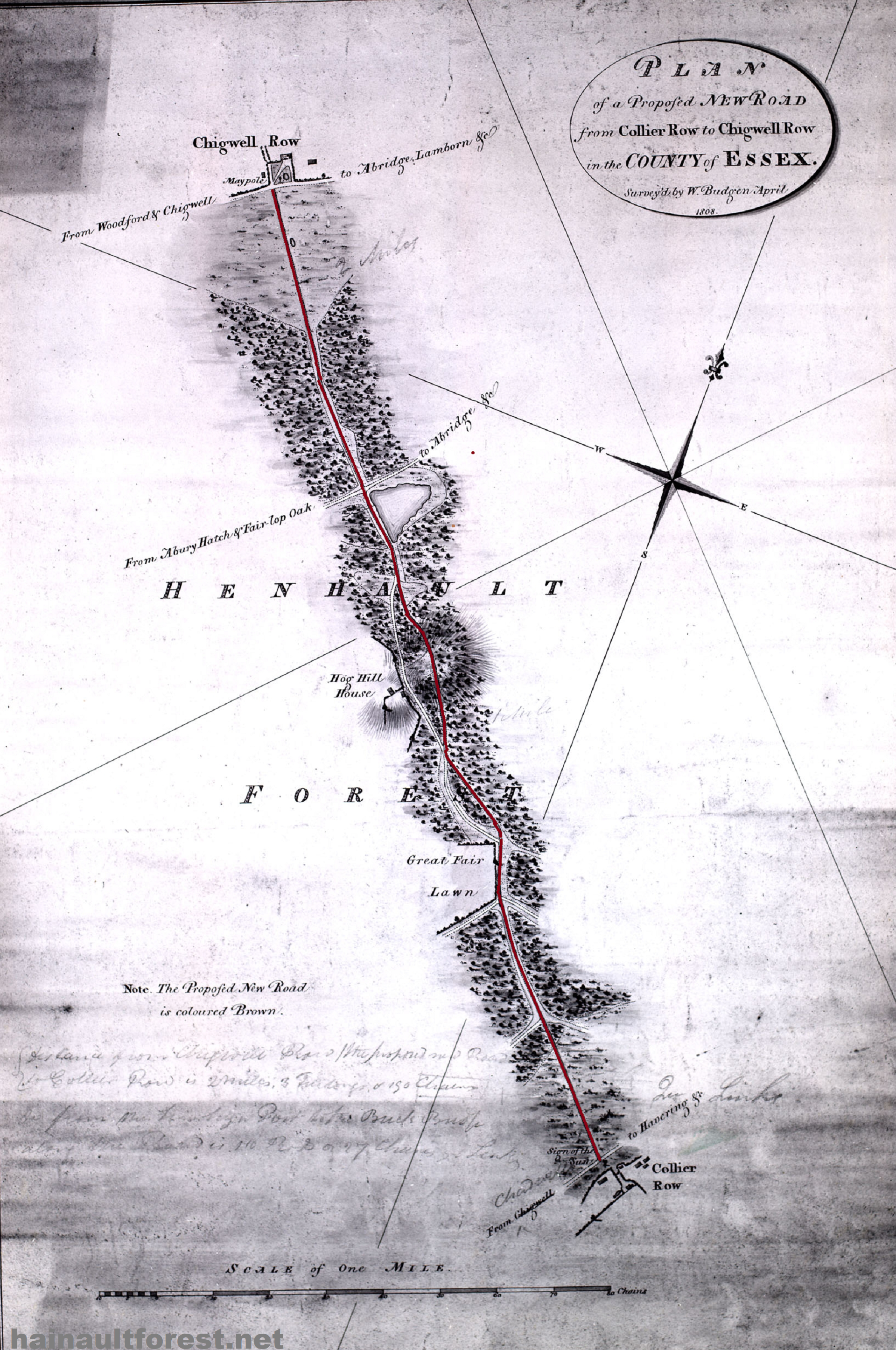
In 1808 plans were drawn up for a new road running from Chigwell Row to Collier Row. The distance would be 2 miles and 3 furlongs, or 190 chains. The single carriageway when built became known as the Romford Road.
Written by Raymond Small, assisted by Elaine Wiltshire.
Memorabilia courtesy of the Daylop Collection.
© hainaultforest.net. All rights reserved.

